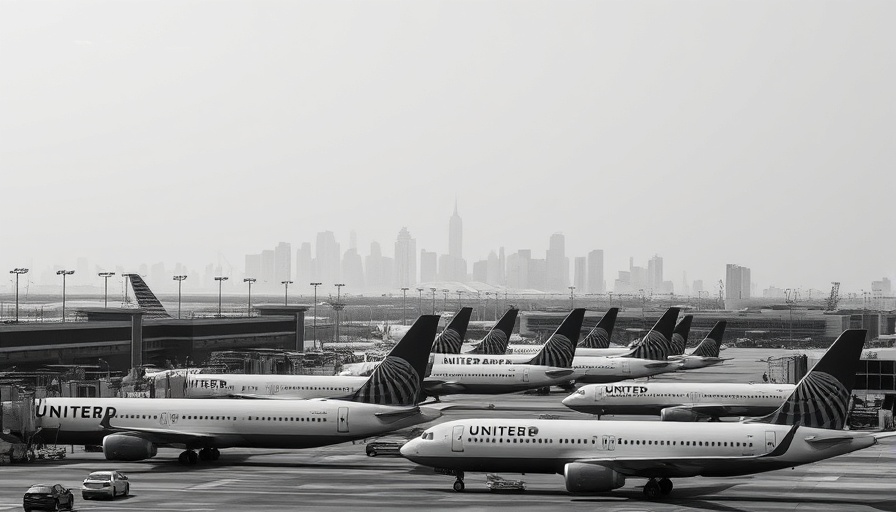
Understanding the Crisis at Newark Liberty Airport
Recently, Newark Liberty International Airport has faced significant operational challenges, highlighted by three incidents that have shaken public confidence and raised urgent concerns about the reliability of its telecommunications infrastructure. With the Federal Aviation Administration (FAA) understaffed and infrastructure crumbling, executives from major telecom companies including Verizon and L3Harris have been called to form an emergency task force to address these ongoing issues.
The Impact of Telecommunications Failures
The recent telecommunications outages at Newark, which forced the FAA to issue ground stops, are an alarming example of how vital technology is to the aviation industry. Following outages that lasted up to 90 seconds and further disruptions affecting air traffic flow, it’s become clear that the current system, which Transportation Secretary Sean Duffy referred to as a "lemon used car," is in dire need of an upgrade. This has sparked a domino effect, contributing to air traffic congestion and delays that affect airlines and passengers alike.
Innovative Solutions on the Horizon
In response to these challenges, the FAA is planning to transition from older copper telephone lines to modern fiber-optic cables, which promise greater resilience and reliability. The installation of these new systems should enhance communication capabilities between Newark and surrounding air traffic control facilities, aiming to complete testing within two weeks. This upgrade not only serves the Newark facility but will establish a more robust framework that could potentially serve as a model for other congested airports in the United States.
Examining the Understaffing Crisis
One of the root causes of the ongoing challenges is the FAA’s significant understaffing. Currently, there is a shortage of 3,500 air traffic controllers, impacting the FAA’s ability to maintain safe operations amidst rising air traffic demands. With an increasing number of flights and congested airspace over major cities like New York, urgent consideration must be given to recruiting efforts that can attract new talent to this essential service.
Historical Context of Airport Infrastructure Issues
Over the years, the infrastructure of Newark and similar airports has lagged behind the growing demands of air traffic. This has not only led to public frustration but also raised questions about the prioritization of technological advancements within the aviation sector. As Secretary Duffy indicated, a transition in control of Newark’s airspace to Philadelphia was an attempt to tackle these issues, but it has become clear that more immediate and effective action is needed to prevent recurrent failures.
Future Predictions: Technological Innovations Awaited
The ongoing initiative to modernize telecommunications and staffing at Newark may set a precedent for airports nationwide. If successful, this initiative could pave the way for similar upgrades at other aging airports struggling with telecom reliability. Future enhancements could lead to smoother operations across the country, improving the travel experience for millions of passengers.
Community and Economic Relevance
The implications of these telecom failures extend beyond inconvenience; they resonate within the broader economy. Newark Airport is a pivotal transit hub for both business travel and tourism in New Jersey and the surrounding regions. Efficient airport operations are crucial not only for customer satisfaction but also for local businesses that rely on timely travel. The resolution of these problems will have a cascading effect on the local economy and the aviation industry at large.
Conclusion: The Path Ahead
At Newark Liberty Airport, the combination of outdated technology and understaffing has culminated in a crisis that calls for immediate remedial action. The formation of a task force and the push for telecom modernization mark significant steps towards restoring public trust and boosting operational reliability. As these changes are implemented, the aviation industry will watch closely, hoping for improvements that could revolutionize air travel experiences.
 Add Row
Add Row  Add
Add 




Write A Comment